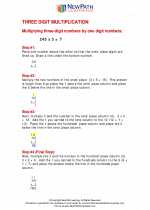Cotangent Function
The cotangent function, often abbreviated as "cot", is one of the six trigonometric functions. It is defined as the ratio of the length of the adjacent side to the length of the opposite side in a right-angled triangle.
Mathematically, the cotangent of an angle θ is given by the ratio:
size: 1.5em;">cot(θ) = adjacent side / opposite sideAlternatively, the cotangent function can be expressed in terms of the sine and cosine functions as:
size: 1.5em;">cot(θ) = 1 / tan(θ) = cos(θ) / sin(θ)Graph of Cotangent Function
The graph of the cotangent function is periodic and has vertical asymptotes at odd multiples of π. It is also an odd function, meaning that it is symmetric with respect to the origin.

Common Cotangent Values
Here are some common values of the cotangent function for certain angles:
| Angle (θ) | Cotangent (cot(θ)) |
|---|---|
| 0° | Undefined (vertical asymptote) |
| 30° | √3 |
| 45° | 1 |
| 60° | 1/√3 |
| 90° | 0 |
Relationship with Other Trigonometric Functions
The cotangent function is related to the other trigonometric functions by the following identities:
- cot(θ) = 1 / tan(θ)
- cot(θ) = cos(θ) / sin(θ)
These relationships can be useful for simplifying trigonometric expressions and solving trigonometric equations.
Applications of Cotangent
The cotangent function has various applications in mathematics, physics, and engineering. It is used in the analysis of alternating current (AC) circuits, oscillatory motion, and signal processing, among other areas.
Understanding the cotangent function is important for solving problems involving right-angled triangles, periodic phenomena, and waveforms.
That's a brief overview of the cotangent function. If you have any further questions or need additional help, feel free to ask!
.◂Math Worksheets and Study Guides Fifth Grade. Multiplication

 Worksheet/Answer key
Worksheet/Answer key
 Worksheet/Answer key
Worksheet/Answer key
 Worksheet/Answer key
Worksheet/Answer key
 Worksheet/Answer key
Worksheet/Answer key
 Worksheet/Answer key
Worksheet/Answer key
 Worksheet/Answer key
Worksheet/Answer key
 Worksheet/Answer key
Worksheet/Answer key
 Vocabulary/Answer key
Vocabulary/Answer key
